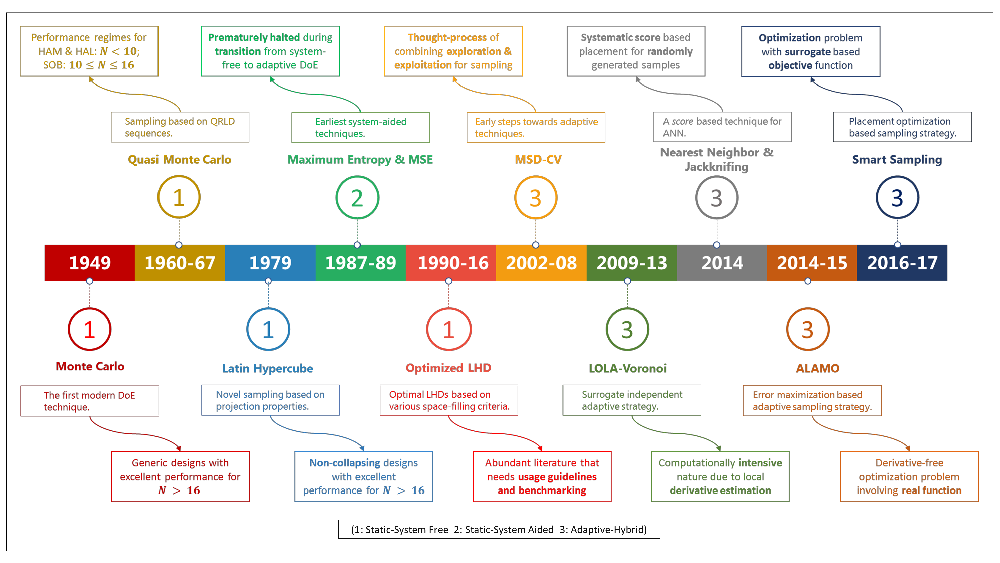Design of Computer Experiments: A Review
- Modern DoE techniques are comprehensively reviewed.
- A detailed classification and chronological evolution of modern DoE research is presented.
- Our numerical and visual analyses revealed the excellent high dimensional performance of SOB3.
- Rapidly growing class of adaptive DoE is critically discussed.
- Several potential opportunities for future research in modern DoE are discussed.
 In this article, we present a detailed overview of the literature on the design of computer experiments. We classify the existing literature broadly into two categories, viz. static and adaptive design of experiments (DoE). We begin with the abundant literature available on static DoE, its chronological evolution, and its pros and cons. Our discussion naturally points to the challenges that are faced by the static techniques. The adaptive DoE techniques employ intelligent and iterative strategies to address these challenges by combining system knowledge with space-filling for sample placement. We critically analyze the adaptive DoE literature based on the key features of placement strategies. Our numerical and visual analyses of the static DoE techniques reveal the excellent performance of Sobol sampling (SOB3) for higher dimensions; and that of Hammersley (HAM) and Halton (HAL) sampling for lower dimensions. Finally, we provide several potential opportunities for the future modern DoE research.
In this article, we present a detailed overview of the literature on the design of computer experiments. We classify the existing literature broadly into two categories, viz. static and adaptive design of experiments (DoE). We begin with the abundant literature available on static DoE, its chronological evolution, and its pros and cons. Our discussion naturally points to the challenges that are faced by the static techniques. The adaptive DoE techniques employ intelligent and iterative strategies to address these challenges by combining system knowledge with space-filling for sample placement. We critically analyze the adaptive DoE literature based on the key features of placement strategies. Our numerical and visual analyses of the static DoE techniques reveal the excellent performance of Sobol sampling (SOB3) for higher dimensions; and that of Hammersley (HAM) and Halton (HAL) sampling for lower dimensions. Finally, we provide several potential opportunities for the future modern DoE research.
- This paper draws from preprint 182: Design of Computer Experiments: A Review
- Access the article at the publisher: DOI: 10.1016/j.compchemeng.2017.05.010



